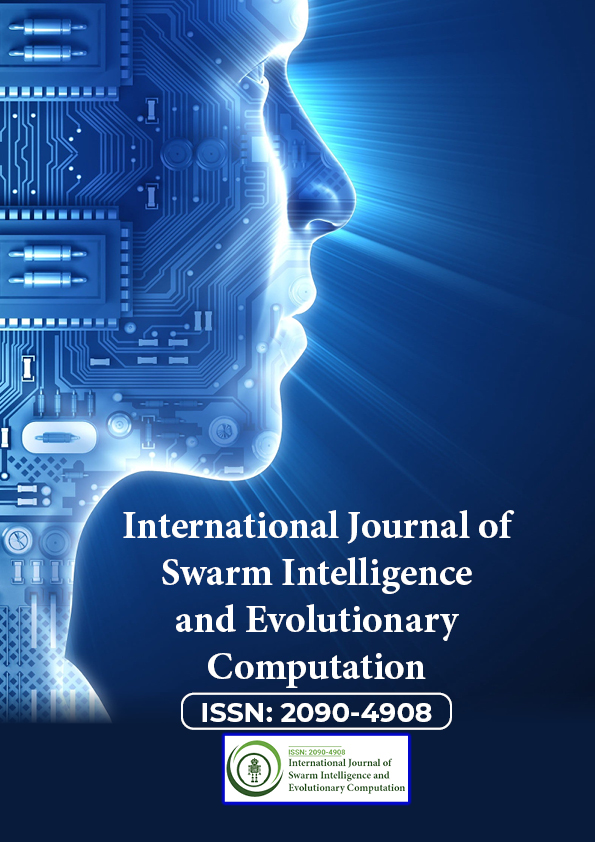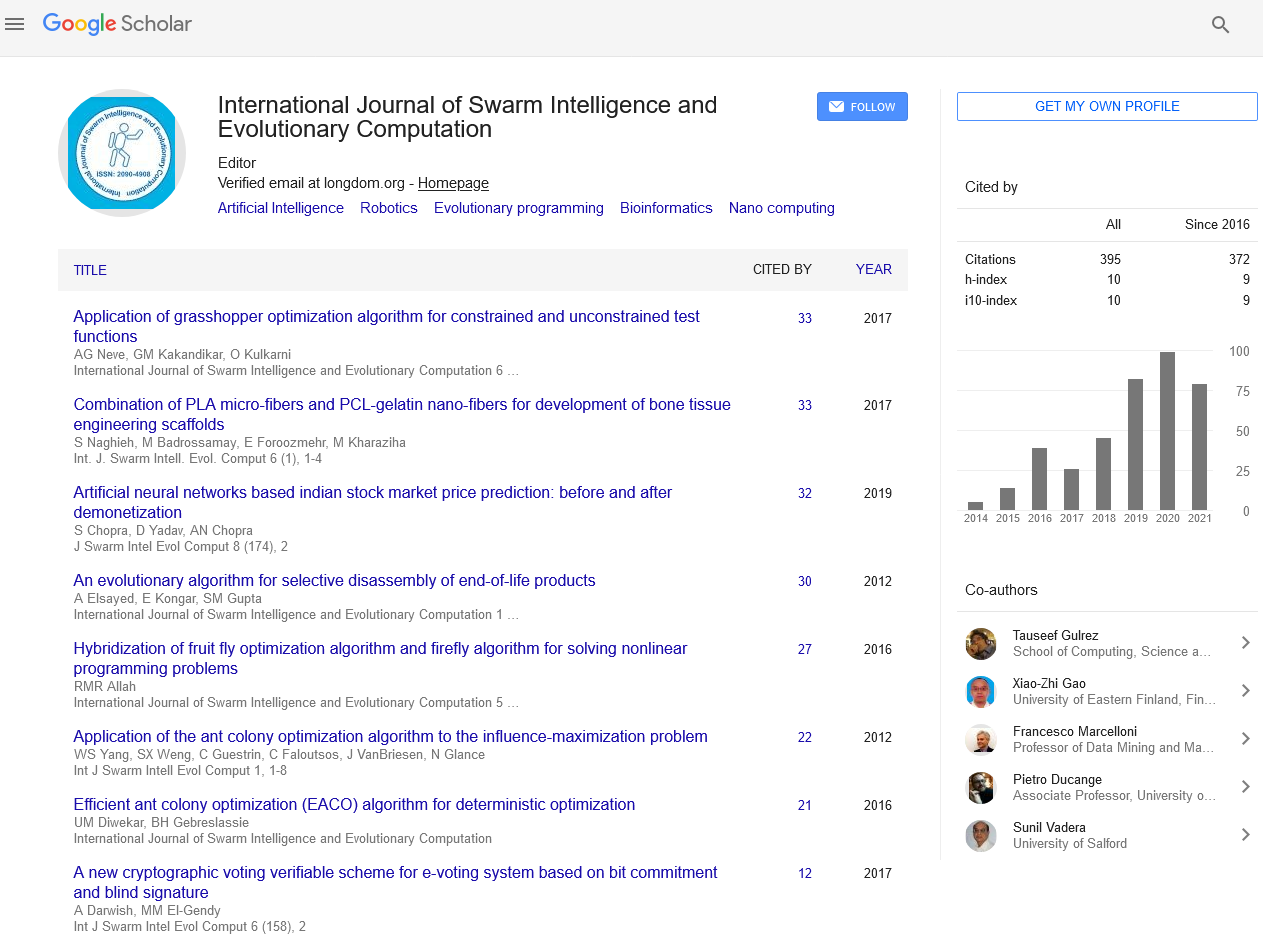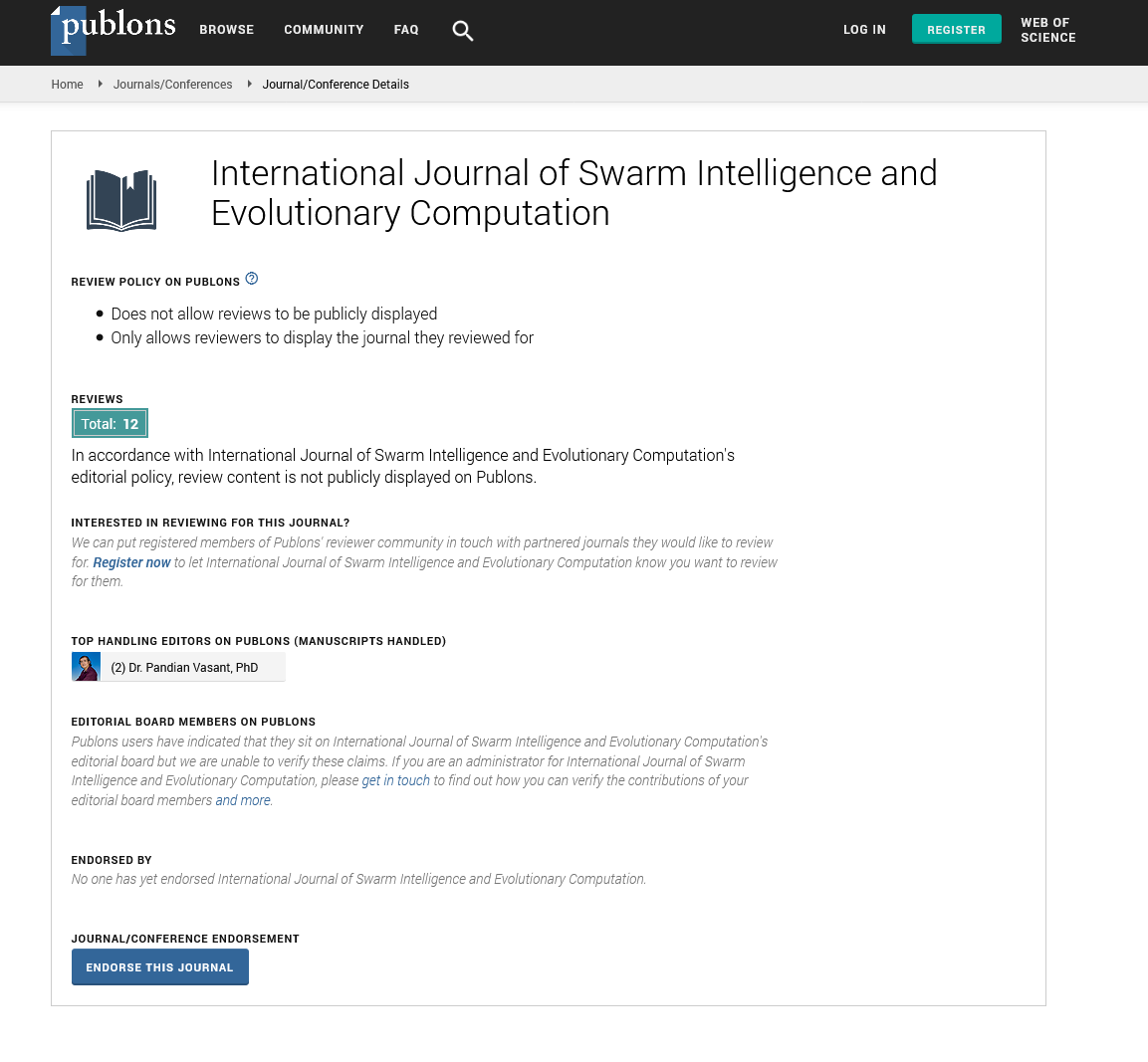Indexed In
- Genamics JournalSeek
- RefSeek
- Hamdard University
- EBSCO A-Z
- OCLC- WorldCat
- Publons
- Euro Pub
- Google Scholar
Useful Links
Share This Page
Journal Flyer

Open Access Journals
- Agri and Aquaculture
- Biochemistry
- Bioinformatics & Systems Biology
- Business & Management
- Chemistry
- Clinical Sciences
- Engineering
- Food & Nutrition
- General Science
- Genetics & Molecular Biology
- Immunology & Microbiology
- Medical Sciences
- Neuroscience & Psychology
- Nursing & Health Care
- Pharmaceutical Sciences
Opinion Article - (2024) Volume 13, Issue 4
Distributed Computing Algorithms: Enhancing Efficiency and Scalability in Modern Systems
Philips Nelson*Received: 28-Jun-2024, Manuscript No. SIEC-24-26600; Editor assigned: 01-Jul-2024, Pre QC No. SIEC-24-26600 (PQ); Reviewed: 16-Jul-2024, QC No. SIEC-24-26600; Revised: 24-Jul-2024, Manuscript No. SIEC-24-26600 (R); Published: 31-Jul-2024, DOI: 10.35248/2090-4908.24.13.386
Description
Distributed computing is a field that explores how computational tasks can be divided and executed across multiple interconnected computers or nodes. This approach is essential for tackling complex problems that require more resources than a single machine can offer. Distributed computing algorithms are fundamental in designing systems that can efficiently manage and utilize distributed resources.
Distributed databases
Distributed databases are systems where data is stored across multiple physical locations, and the Database Management System (DBMS) coordinates access to this data. Distributed computing algorithms plays an important role in ensuring consistency, reliability, and efficiency in these systems. One of the most critical algorithms used in this context is the Two-Phase Commit (2PC) protocol. This algorithm ensures that all participating nodes in a distributed transaction either commit to the transaction or abort it, maintaining atomicity across the distributed system.
Another important algorithm is Paxos, which is used for consensus in distributed systems. Paxos helps in achieving agreement on a single value among distributed nodes, which is vital for maintaining consistency in distributed databases where nodes might fail or become unreachable.
Cloud computing
Cloud computing leverages distributed systems to provide scalable and flexible computing resources. Algorithms in cloud computing manage tasks such as resource allocation, load balancing, and fault tolerance. It simplifies the processing of large data sets by dividing the task into smaller sub-tasks that are processed in parallel across many nodes. This approach is particularly useful for data analysis and large-scale computations. Another key algorithm in cloud environments is the consistent hashing algorithm. It is used for distributing data across a cluster of nodes in such a way that minimizes the amount of data that needs to be moved when nodes are added or removed, thus improving scalability and fault tolerance.
Peer-to-peer networks
Peer-To-Peer (P2P) networks are decentralized networks where each node, or peer, has equal responsibilities and can act as both a client and a server. Distributed computing algorithms in P2P networks are important for managing tasks such as data sharing, node discovery, and network maintenance. The Chord algorithm, for instance, provides a Distributed Hash Table (DHT) that allows for efficient data retrieval in P2P networks. Chord ensures that data can be located quickly even as nodes join or leave the network.
The Bit torrent protocol is another example of a distributed algorithm used in P2P networks. It facilitates the efficient distribution of large files by breaking them into smaller pieces and sharing them among peers, allowing multiple peers to download and upload simultaneously.
Distributed file systems
Distributed file systems, such as Hadoop Distributed File System (HDFS) and Google File System (GFS), are designed to store and manage large amounts of data across multiple machines. Algorithms in these systems ensure data replication, fault tolerance, and efficient data retrieval. Replica Placement algorithms are essential for distributing data across multiple nodes while ensuring that data is available even in the event of node failures. For instance, HDFS uses a block replication strategy to ensure that data blocks are replicated across different nodes.
Network routing
In distributed networks, efficient routing algorithms are necessary for data to travel from one node to another across potentially complex network topologies. Algorithms such as Dijkstra’s Shortest path and Bellman-ford are widely used for finding the shortest path between nodes. In dynamic environments, where network topology may change frequently, Link-state and Distance-vector routing protocols help maintain up-to-date routing information and adapt to network changes.
Distributed machine learning
Distributed machine learning involves training models using data spread across multiple machines. Algorithms like Parameter server and Federated learning are designed to handle the challenges of distributed training. The Parameter server architecture allows for efficient parameter updates and synchronization across distributed nodes, while Federated learning enables training models on decentralized data sources while preserving data privacy.
Conclusion
Distributed computing algorithms are integral to modern computing systems, offering solutions to complex problems in various applications. From distributed databases and cloud computing to peer-to-peer networks and machine learning, these algorithms enhance the efficiency, scalability, and reliability of distributed systems. As technology continues to evolve, the development of new algorithms and improvements to existing ones will remain important for advancing distributed computing and addressing emerging challenges.
Citation: Nelson P (2024) Distributed Computing Algorithms: Enhancing Efficiency and Scalability in Modern Systems. Int J Swarm Evol Comput. 13:386.
Copyright: © 2024 Nelson P. This is an open-access article distributed under the terms of the Creative Commons Attribution License, which permits unrestricted use, distribution, and reproduction in any medium, provided the original author and source are credited.


